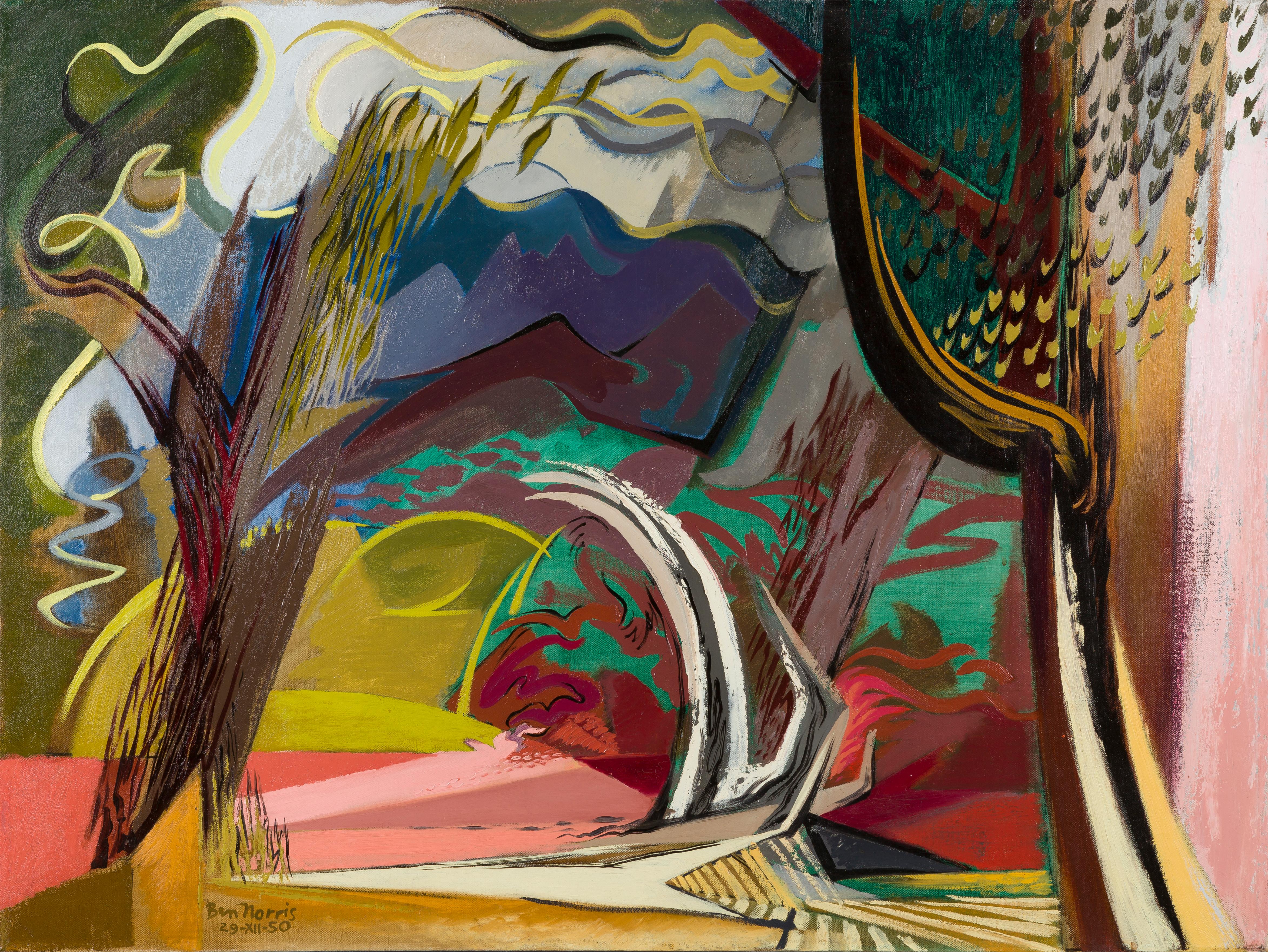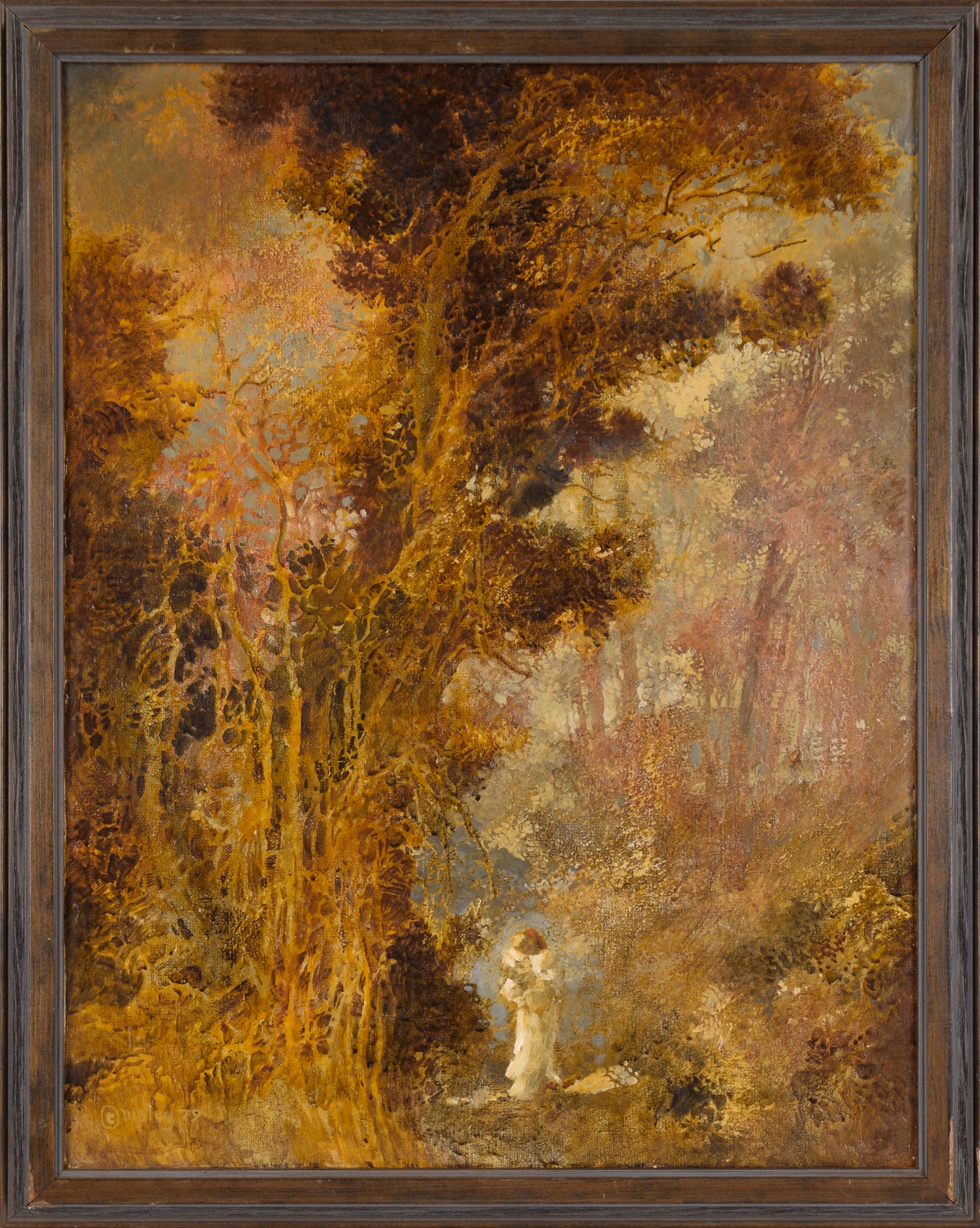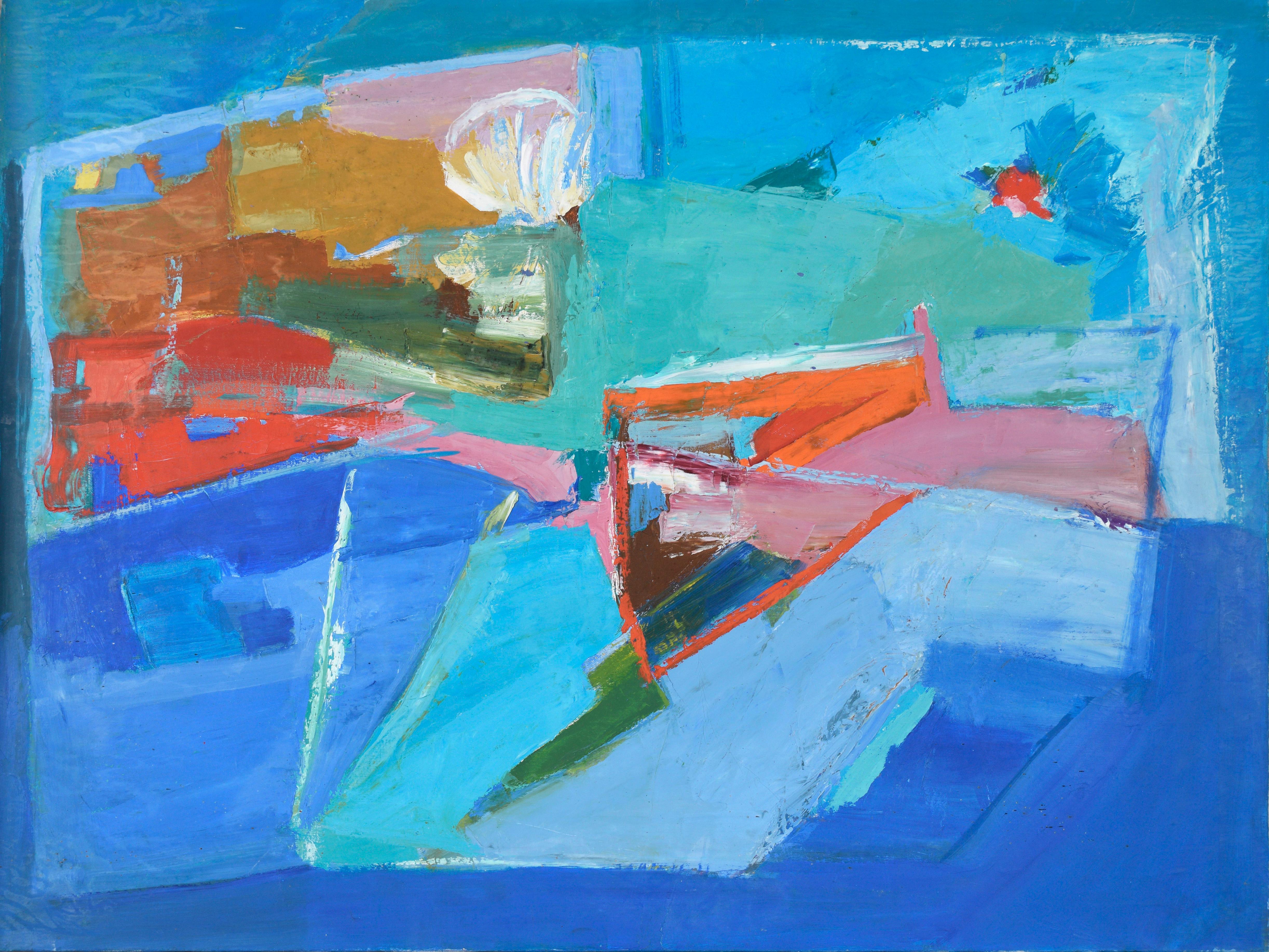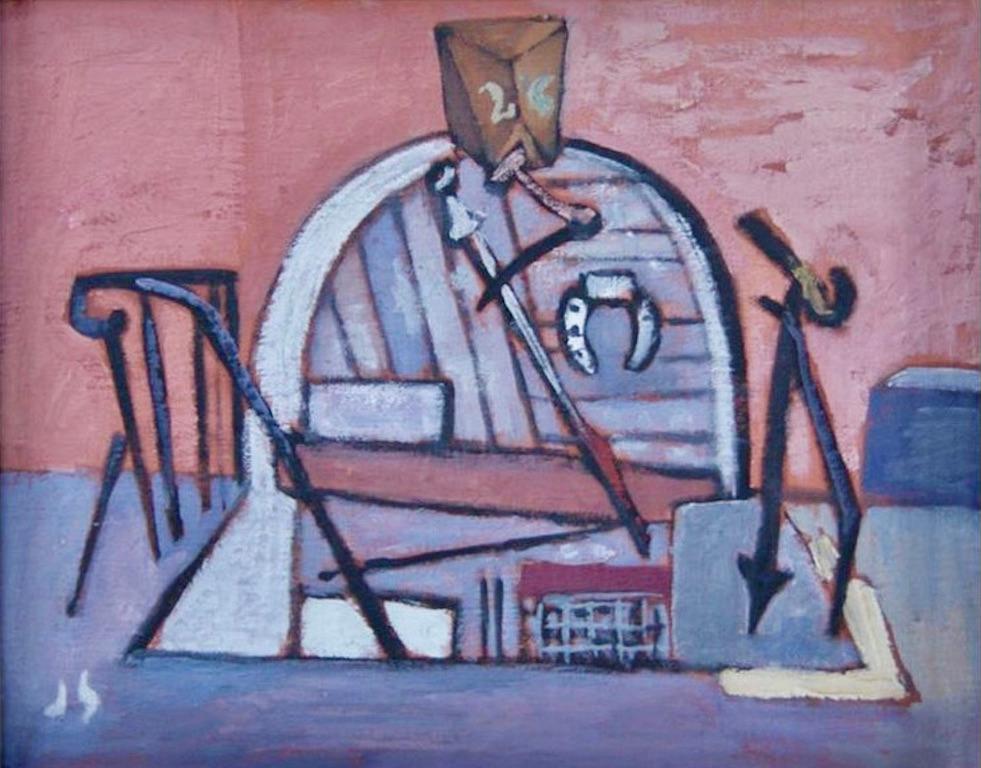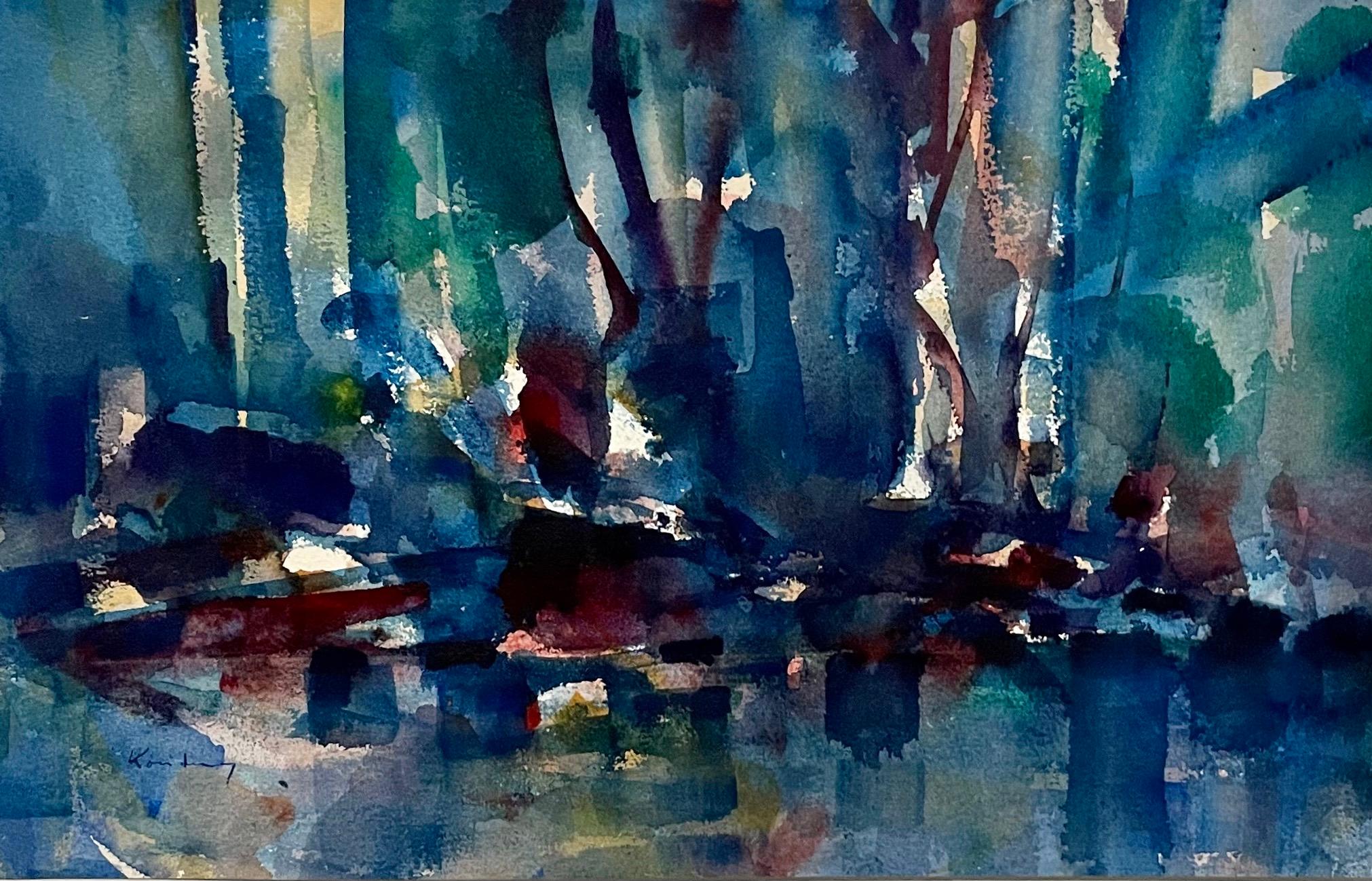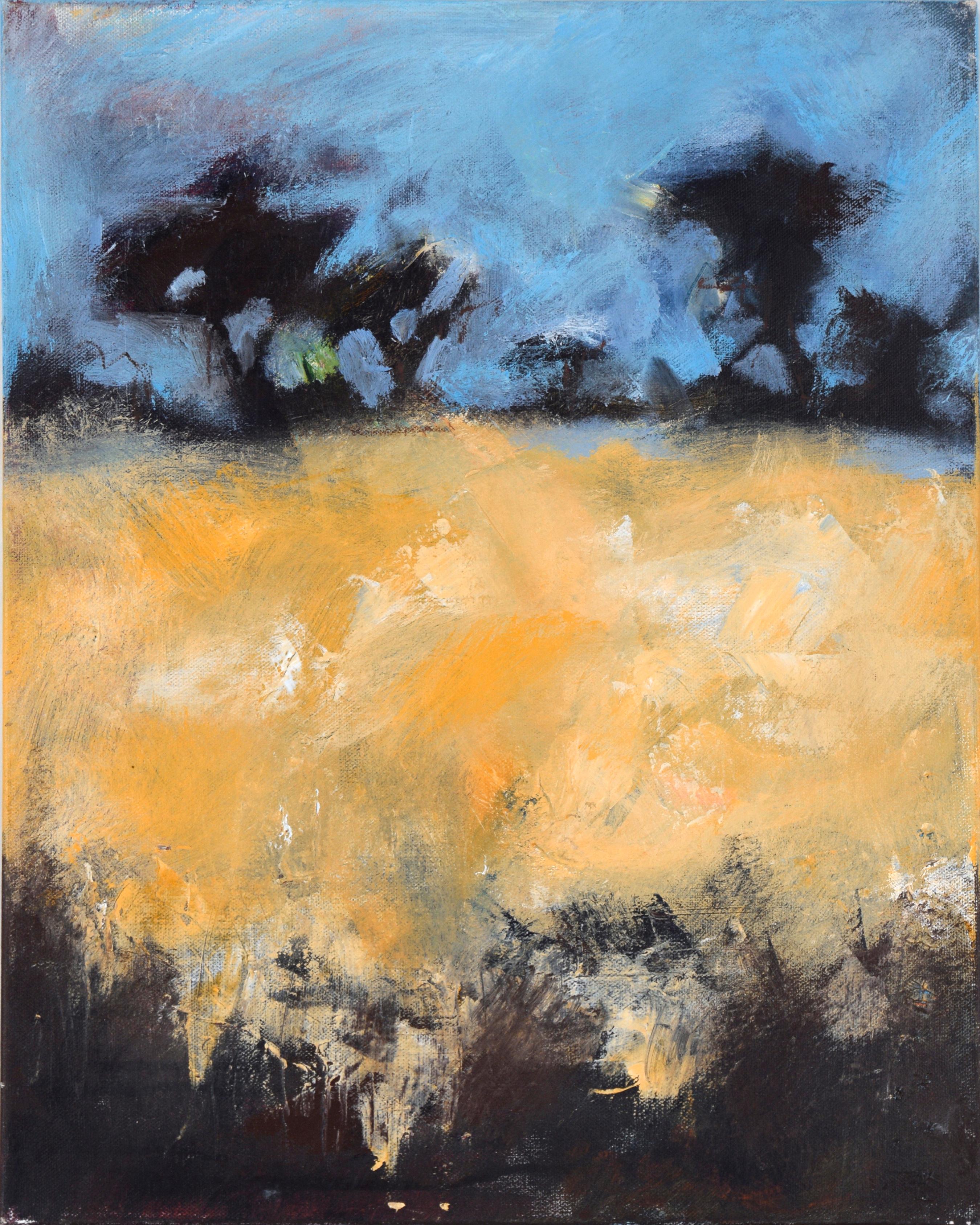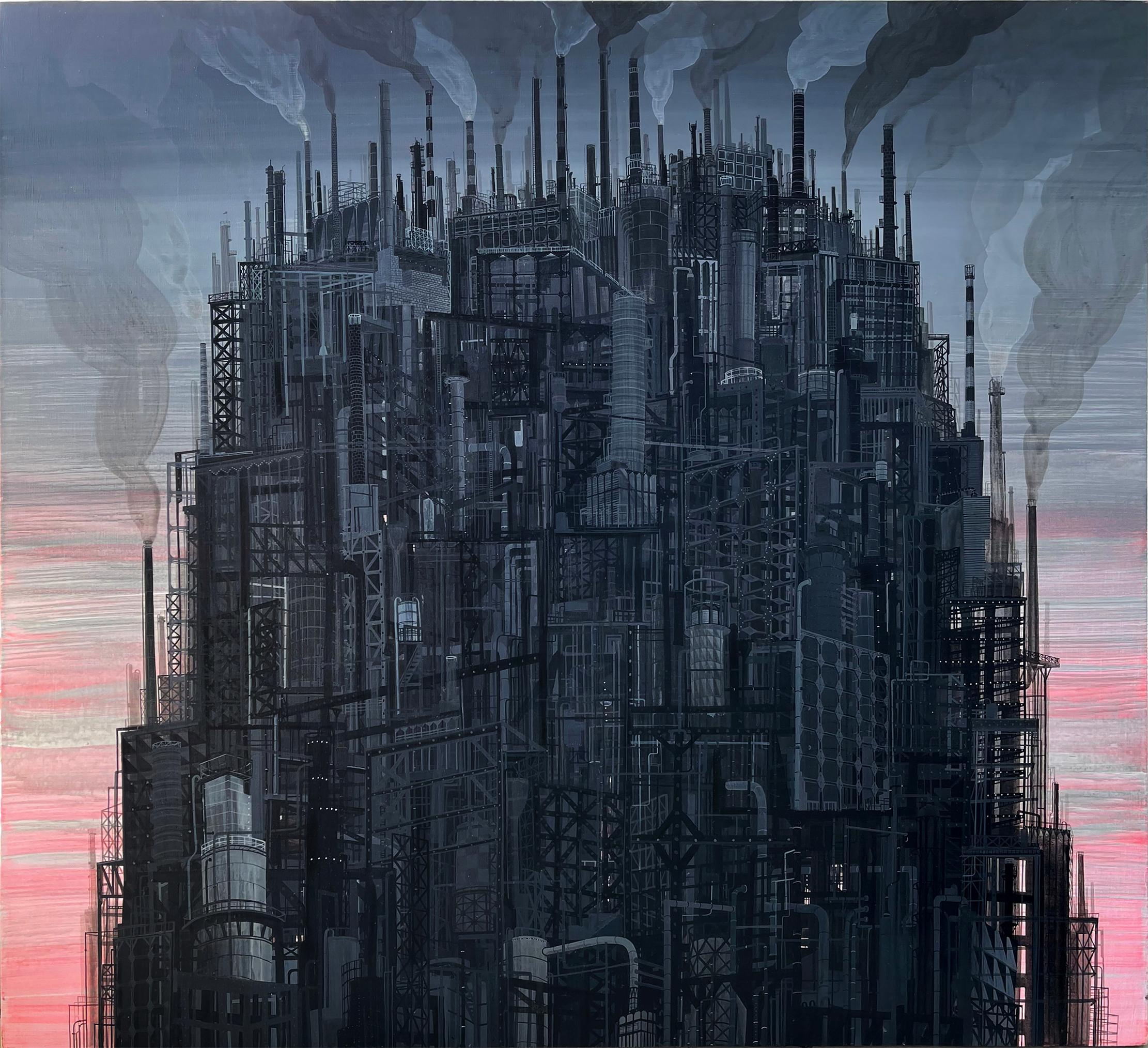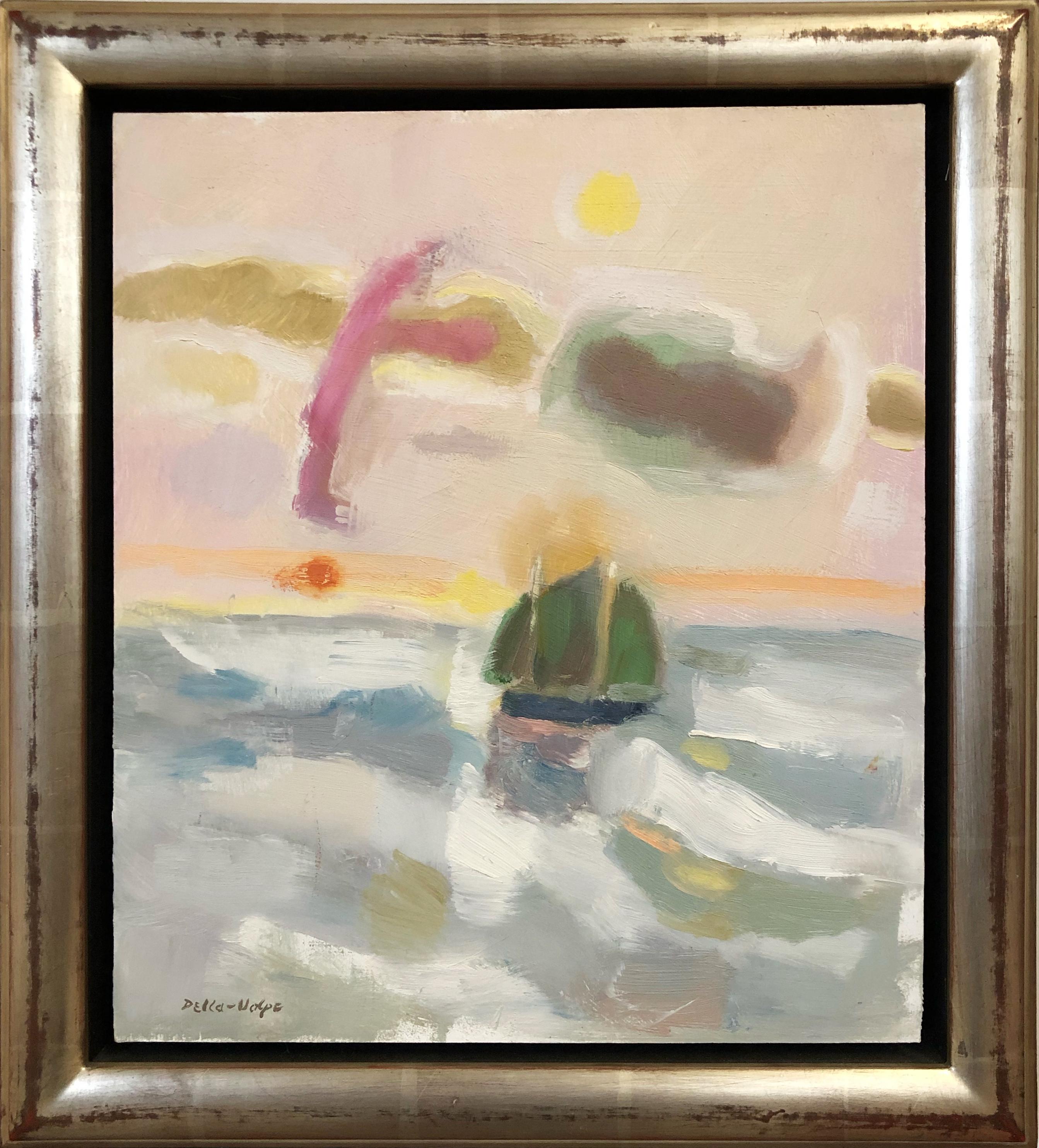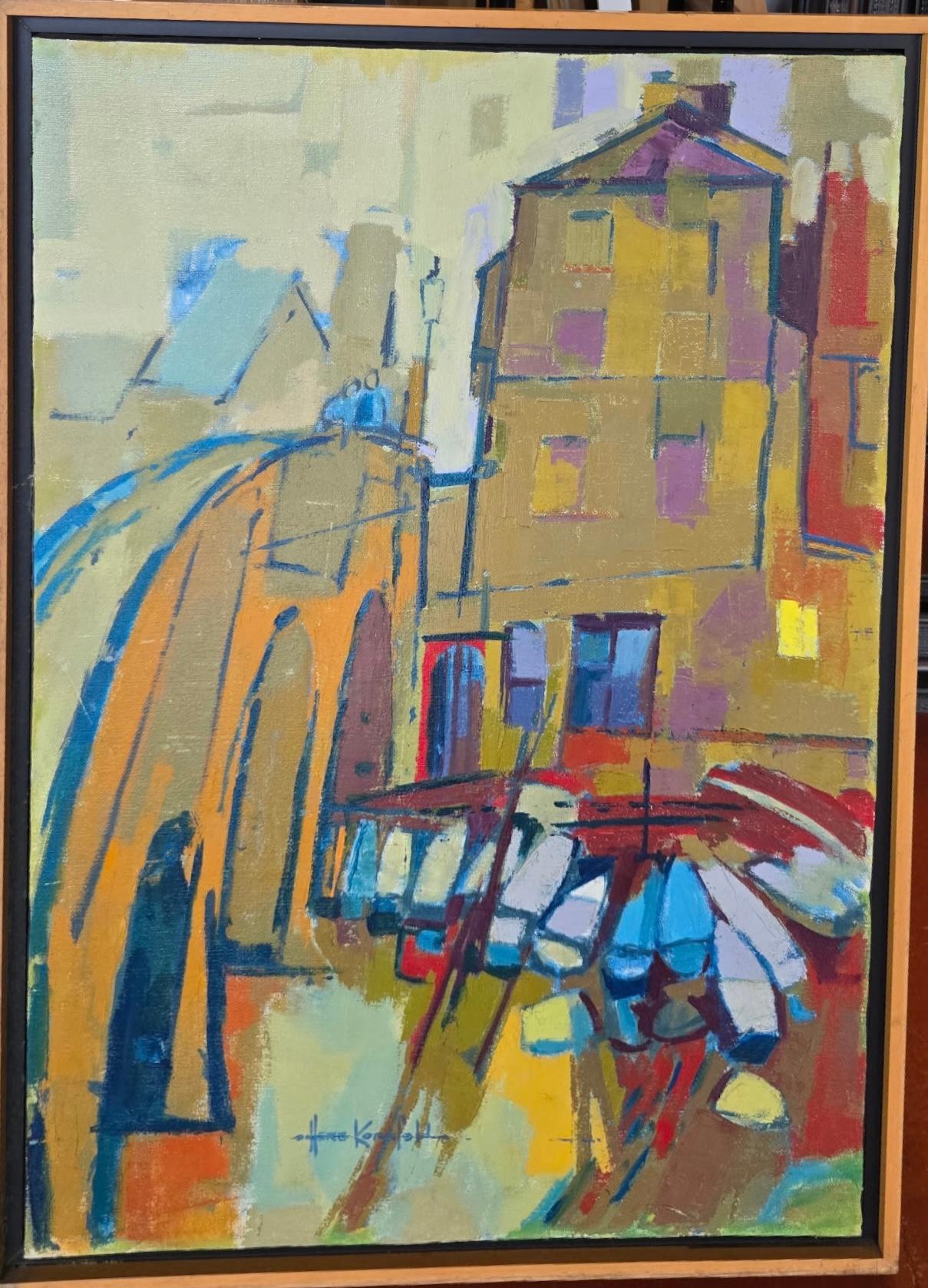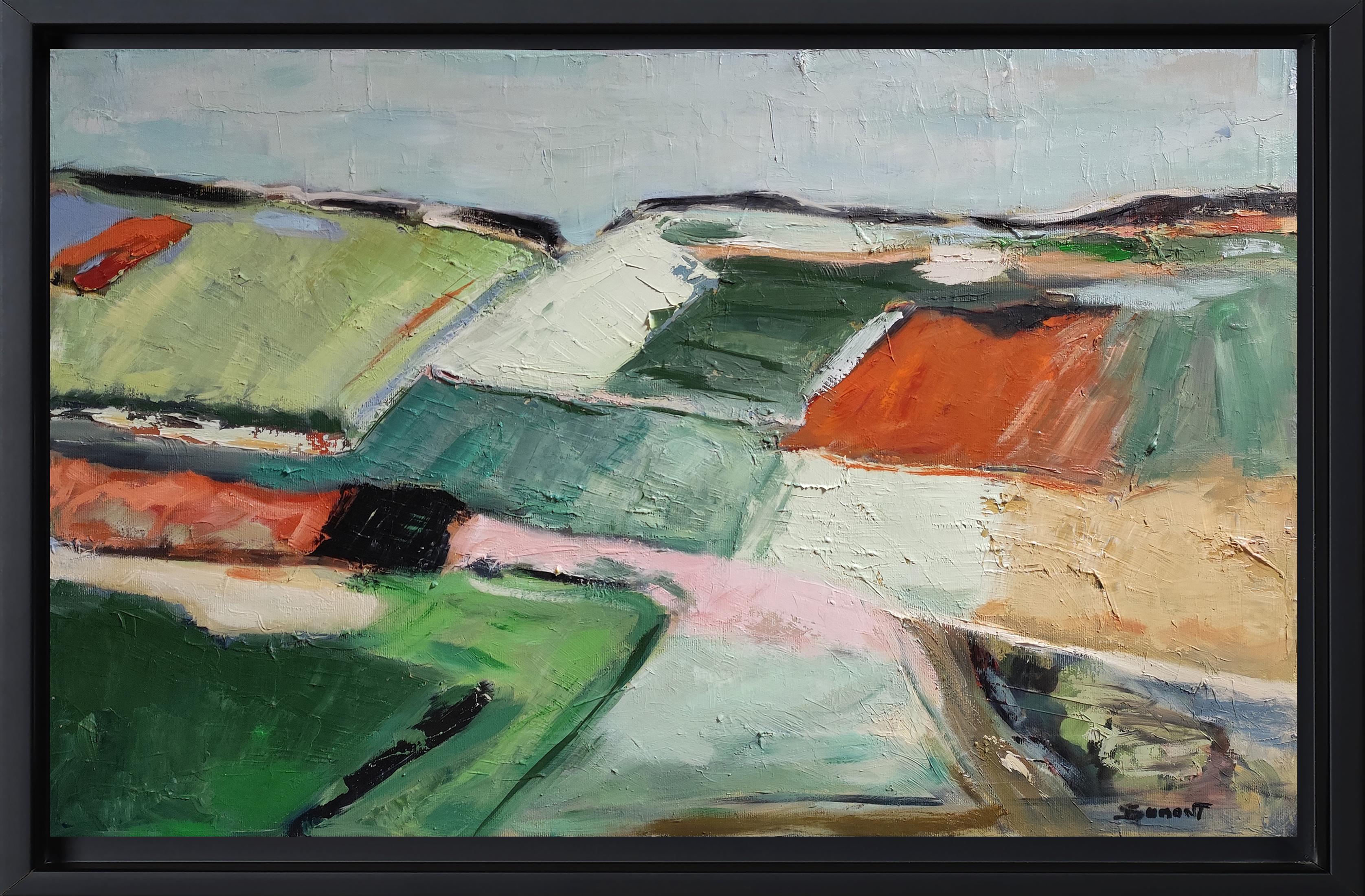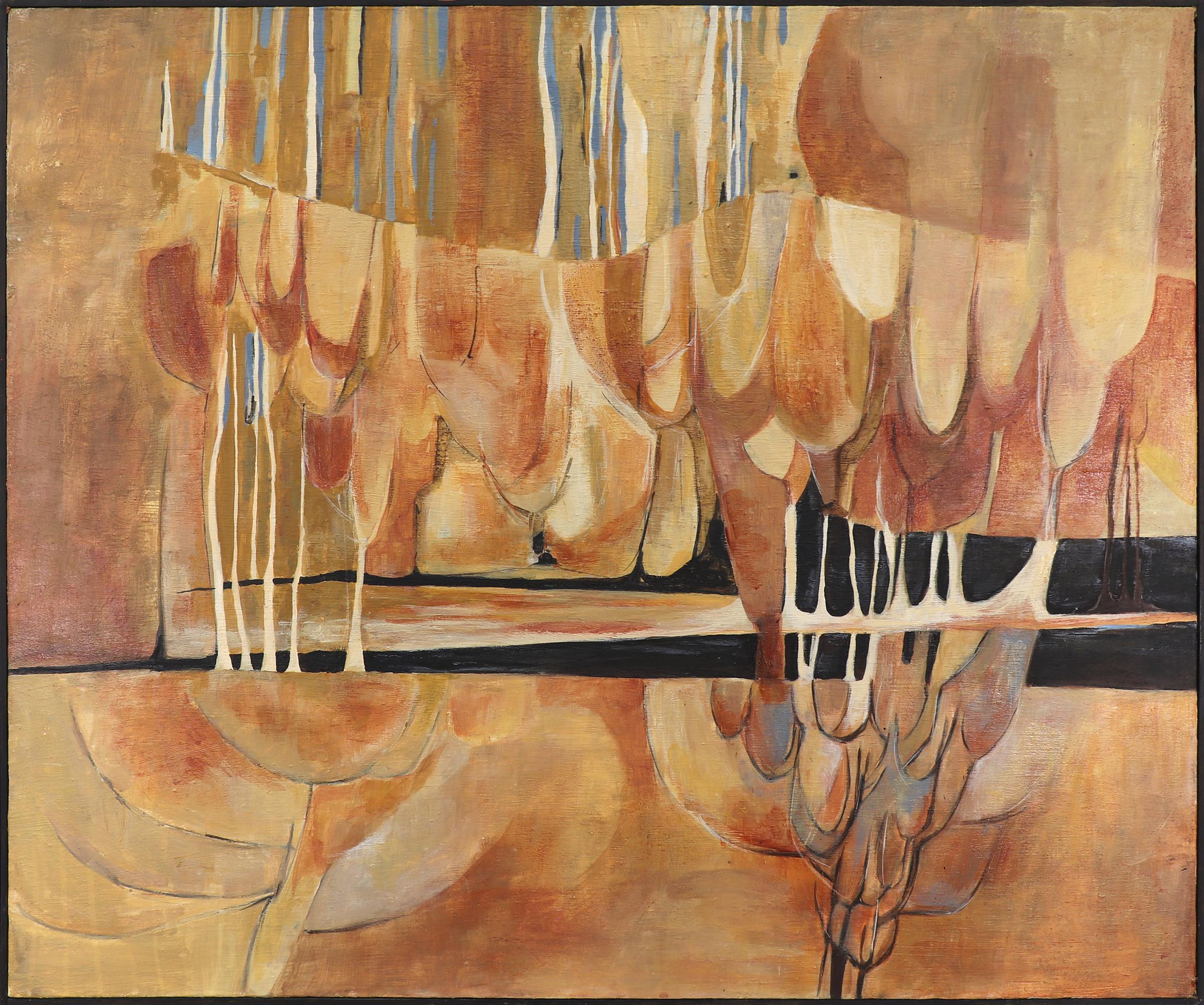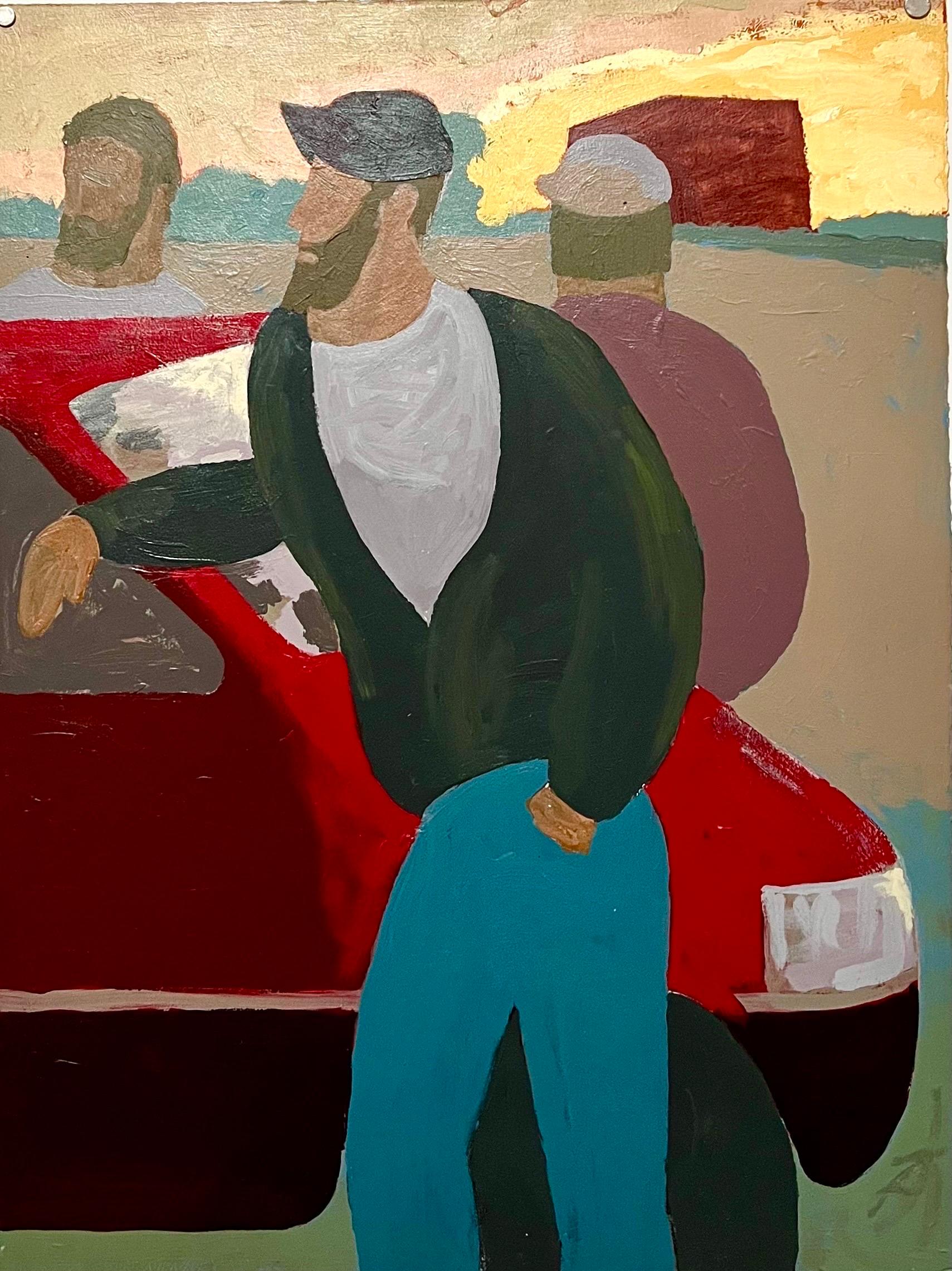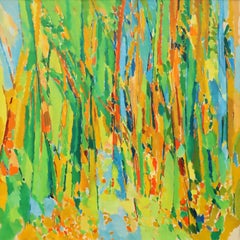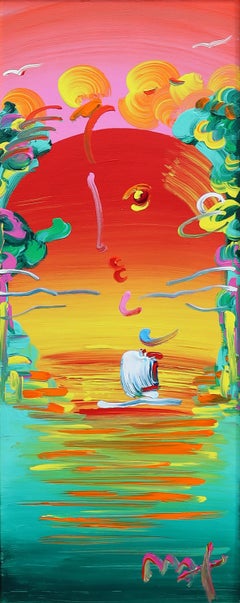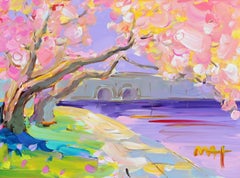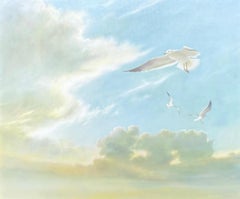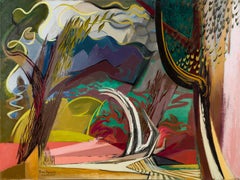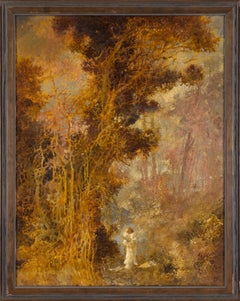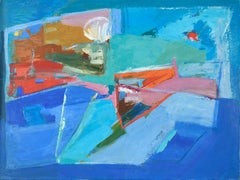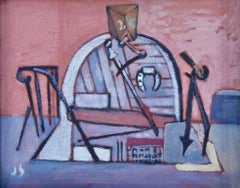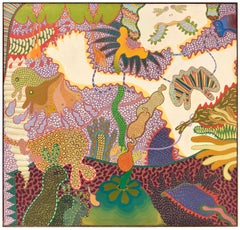
Tropic Exotica
View Similar Items
Want more images or videos?
Request additional images or videos from the seller
1 of 5
Ron ThomasTropic Exoticac. 1970s
c. 1970s
About the Item
- Creator:Ron Thomas (1943 - 2009)
- Creation Year:c. 1970s
- Dimensions:Height: 50 in (127 cm)Width: 50 in (127 cm)Depth: 2 in (5.08 cm)
- Medium:
- Movement & Style:
- Period:
- Condition:
- Gallery Location:Missouri, MO
- Reference Number:1stDibs: LU74734820302
About the Seller
5.0
Vetted Professional Seller
Every seller passes strict standards for authenticity and reliability
Established in 1970
1stDibs seller since 2017
155 sales on 1stDibs
Typical response time: 23 hours
Authenticity Guarantee
In the unlikely event there’s an issue with an item’s authenticity, contact us within 1 year for a full refund. DetailsMoney-Back Guarantee
If your item is not as described, is damaged in transit, or does not arrive, contact us within 7 days for a full refund. Details24-Hour Cancellation
You have a 24-hour grace period in which to reconsider your purchase, with no questions asked.Vetted Professional Sellers
Our world-class sellers must adhere to strict standards for service and quality, maintaining the integrity of our listings.Price-Match Guarantee
If you find that a seller listed the same item for a lower price elsewhere, we’ll match it.Trusted Global Delivery
Our best-in-class carrier network provides specialized shipping options worldwide, including custom delivery.More From This Seller
View AllDark Green Wood
By Philip Sutton
Located in Missouri, MO
Dark Green Wood, 1956
Philip Sutton RA (British, b. 1928)
Oil on Canvas
Signed and Titled Verso
34 x 34 inches
41 x 41 inches with frame
Philip Sutton studied under William Coldstre...
Category
1950s Modern Abstract Paintings
Materials
Canvas, Oil
Price Upon Request
Better World Version I
By Peter Max
Located in Missouri, MO
Better World Version I
Peter Max (German, b. 1937)
Acrylic on Canvas
24 x 9.75 inches
36 x 21.5 inches with frame
Signed lower right
Known throughout the world and a household name in America, Max is known for his new age style cosmic imagery and multi-colored blends. During the late 60's and early 70's his colorful art reached millions of people and he won numerous major awards for his work. His paintings, drawings and limited edition graphics have been exhibited in major museums throughout the world. He works in multiple media, including oil, acrylics, water colors, fingerpaints, dyes, pastels, charcoal, pen, multi-colored pencils, etchings, engravings, animation cels, lithographs, serigraphs, ceramics, sculpture, collage, video, xerox, fax, and computer graphics. He also includes mass media as a "canvas" for his creative expression.
Peter Max was born in Berlin, Germany, and spent his childhood in Shanghai. From China, the family went to Tibet for a year, and then on to Israel. His family's odyssey continued to Paris, and finally, at the age of 16, Max arrived in the United States. He began his art studies in New York at the Art Student's League and continued at the Pratt Institute and School of Visual Arts.
Max often uses American symbols in his artwork and has done paintings and projects for presidents Ford...
Category
21st Century and Contemporary Modern Landscape Paintings
Materials
Canvas, Acrylic
Price Upon Request
Cherry Blossom Near Washington Bridge
By Peter Max
Located in Missouri, MO
Cherry Blossom Near Washington Bridge
Peter Max (German, b. 1937)
Acrylic on Canvas
16 x 20 inches
27 x 32 inches with frame
Signed lower right
Known throughout the world and a household name in America, Max is known for his new age style cosmic imagery and multi-colored blends. During the late 60's and early 70's his colorful art reached millions of people and he won numerous major awards for his work. His paintings, drawings and limited edition graphics have been exhibited in major museums throughout the world. He works in multiple media, including oil, acrylics, water colors, fingerpaints, dyes, pastels, charcoal, pen, multi-colored pencils, etchings, engravings, animation cels, lithographs, serigraphs, ceramics, sculpture, collage, video, xerox, fax, and computer graphics. He also includes mass media as a "canvas" for his creative expression.
Peter Max was born in Berlin, Germany, and spent his childhood in Shanghai. From China, the family went to Tibet for a year, and then on to Israel. His family's odyssey continued to Paris, and finally, at the age of 16, Max arrived in the United States. He began his art studies in New York at the Art Student's League and continued at the Pratt Institute and School of Visual Arts.
Max often uses American symbols in his artwork and has done paintings and projects for presidents Ford...
Category
21st Century and Contemporary Modern Abstract Paintings
Materials
Canvas, Acrylic
Price Upon Request
Seagulls (Birds in Flight)
Located in Missouri, MO
Seagulls (Birds in Flight), 1982
By. Jim Palmer (American, b. 1941)
Signed and Dated Lower Right
Unframed: 32" x 36"
Framed: 37" x 42.5"
Born in 1941 in Columbia, South Carolina, Jim Palmer attended the University of South Carolina in 1960 before going on to study at the Atlanta School of Art in 1964. In 1966 he and his wife moved to Hilton Head Island, the second artist to do so during the Island's early years. Since living here, he designed the cover of the Chamber of Commerce' Islander Magazine, has been a contributing artist to the Island Events Magazine, and has painted many Low Country scenes that grace homes and businesses throughout the country.
Palmer was the illustrator for two books written by local authors: A Corner of South Carolina and Moonshadows. His work has been included in exhibits at the Hunter Museum in Chattanooga, TN; Mint Museum, Charlotte, NC; Southeastern Artists Exhibition, Atlanta, GA; Greenville County Art Museum, Greenville, SC; Callaway Gardens, Pine Mountain, GA; and Bay Hills Club, Orlando, FL.
His paintings are part of the private collections of C&S National Banks in Columbia and Hilton Head Island; Banker's Trust Tower, Columbia, SC; Palmetto State Bank, Bluffton, SC, among others. Several paintings are also included in the collections of former Presidents Jimmy Carter and Dwight Eisenhower, former South Carolina Governor Robert McNair and singer John Denver.
Category
1980s American Modern Animal Paintings
Materials
Canvas, Oil
Price Upon Request
Abstract Horizontal
Located in Missouri, MO
Ken Anderson (20th century) was active/lived in United States. Ken Anderson is known for Abstract hanging sculpture.
*See included images and video
Category
1980s American Modern Abstract Paintings
Materials
Canvas, Wood, Mixed Media, Oil, Handmade Paper
Price Upon Request
Maelstrom
By Edith Stone Philips
Located in Missouri, MO
Edith Stone Philips (American 1900-1988)
"Maelstrom" 1965
Oil on Canvas
30 x 40 inches
Signed and Dated Lower Left
EDITH STONE PHILIPS, 88
St. Louis Post-Dispatch (MO) - Sunday, Oc...
Category
1960s American Modern Abstract Paintings
Materials
Canvas, Oil
Price Upon Request
You May Also Like
Landscape Variations No. 2 - Sardonic Interlude
By Ben Norris
Located in Boston, MA
Signed and dated lower left: "Ben Norris / 29 - XII - 50". With label verso: "Landscape Variations II - Sardonic Interlude / by Ben Norris". From the Estate of the Artist.
Exhibite...
Category
Mid-20th Century American Modern Landscape Paintings
Materials
Canvas, Oil
Woman and Child in the Woods - Midcentury Abstracted Landscape in Oil on Canvas
Located in Soquel, CA
Woman and Child in the Woods - Midcentury Abstracted Landscape in Oil on Canvas
Dramatic abstracted painting of a woman holding a child in the woods by Maley (20th Century). This pi...
Category
1970s American Modern Landscape Paintings
Materials
Canvas, Oil, Stretcher Bars
Colorful Abstracted Landscape in the Style of Diebenkorn
Located in Soquel, CA
Colorful Abstracted Landscape in the Style of Diebenkorn by Ellis Hopkins (American, b. 1952).
This dynamic piece features textured blocks of color which resemble an abstracted lan...
Category
Late 20th Century American Modern Abstract Paintings
Materials
Canvas, Stretcher Bars, Oil
$2,362 Sale Price
25% Off
WPA American Scene Modernism 20th Century NYC Industrial "Cellar with Horseshoe"
By Joseph Solman
Located in New York, NY
"Cellar with Horseshoe" WPA American Scene Modernism 20th Century NYC Industrial
Joseph Solman (1909-2008) "Cellar with Horseshoe," 16 x 20 inches, oil on canvas
circa 1938, initial...
Category
1930s American Modern Landscape Paintings
Materials
Canvas, Oil
Modernist Abstract Expressionist Watercolor Painting Bauhaus Weimar Pawel Kontny
By Pawel Kontny
Located in Surfside, FL
Abstract watercolor composition bearing the influence of the earlier color-block compositions of Paul Klee.
Pawel August Kontny, (Polish-German-American artist) He was born in Laura...
Category
20th Century American Modern Landscape Paintings
Materials
Canvas, Oil
Abstracted Landscape in Acrylic on Wrapped Canvas
By Ilana Ingber
Located in Soquel, CA
Abstracted Landscape in Acrylic on Wrapped Canvas
Vibrant landscape by Ilana Ingber (American, b. 1984). A golden field stretches out towards the horizon, where silhouettes of trees...
Category
2010s American Modern Abstract Paintings
Materials
Canvas, Acrylic, Stretcher Bars
